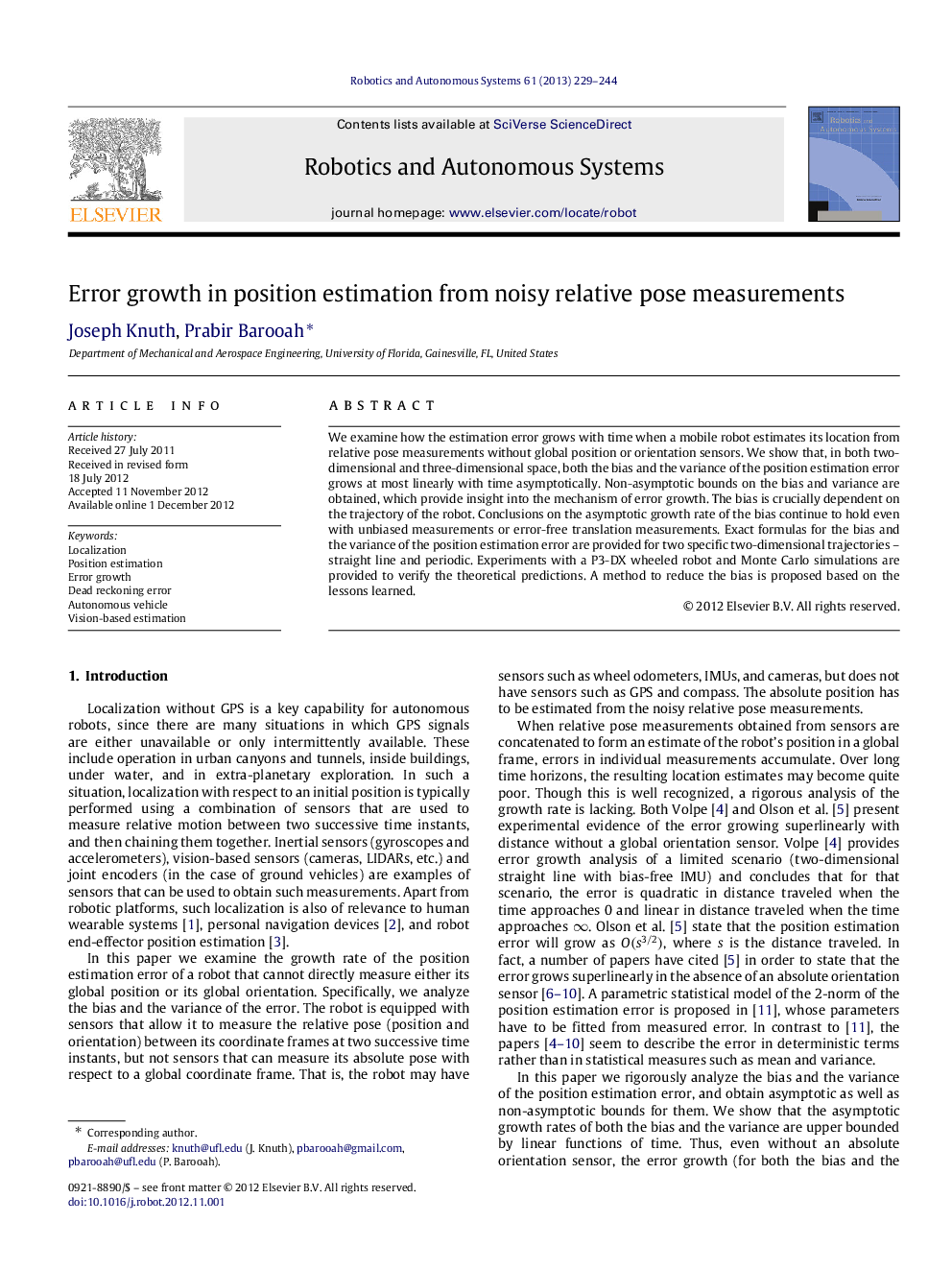| Article ID | Journal | Published Year | Pages | File Type |
|---|---|---|---|---|
| 411415 | Robotics and Autonomous Systems | 2013 | 16 Pages |
We examine how the estimation error grows with time when a mobile robot estimates its location from relative pose measurements without global position or orientation sensors. We show that, in both two-dimensional and three-dimensional space, both the bias and the variance of the position estimation error grows at most linearly with time asymptotically. Non-asymptotic bounds on the bias and variance are obtained, which provide insight into the mechanism of error growth. The bias is crucially dependent on the trajectory of the robot. Conclusions on the asymptotic growth rate of the bias continue to hold even with unbiased measurements or error-free translation measurements. Exact formulas for the bias and the variance of the position estimation error are provided for two specific two-dimensional trajectories–straight line and periodic. Experiments with a P3-DX wheeled robot and Monte Carlo simulations are provided to verify the theoretical predictions. A method to reduce the bias is proposed based on the lessons learned.
► Analyzes the bias and variance of position estimation error from relative pose measurements. ► Precisely characterizes asymptotic growth rate of bias and variance in the absence of absolute orientation or position sensor. ► Shows that both the bias and variance can grow at most linearly with time. ► Results verified through extensive simulations and experiments. ► A novel method to reduce the bias is proposed.
